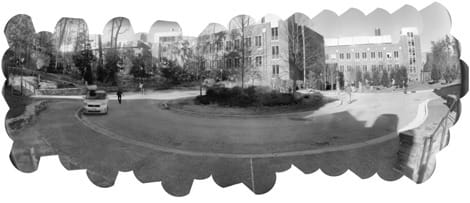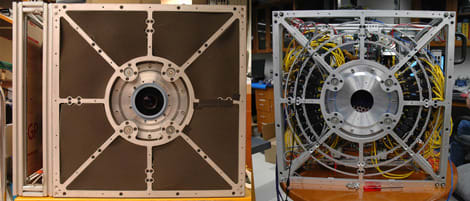The Gigapixel War Has Begun
Duke researchers have developed a gigapixel camera. Should we be impressed?
Recommendations are independently chosen by Reviewed's editors. Purchases made through the links below may earn us and our publishing partners a commission.
We prematurely called an end to the megapixel war back in January. Whoops. Since then, Nikon has released the 36-megapixel D800 and D800E DSLRs. And now, the Wall Street Journal reports, a team at Duke University has built a camera with a whopping gigapixel of resolution—that's 1,000 megapixels, or roughly 30 times the resolution of the Nikon D800.

And...well, it isn't really surprising, or even all that impressive. Gautam Naik at the WSJ seems to think that this new camera, called the AWARE2, is the next revolution in photography. He writes that "[the Aware-2] allows the user—after a photo is taken—to zoom in on portions of the image in extraordinary detail, a development that could fundamentally alter the way images are captured and viewed."
That's exactly the point of having more pixels—mega, giga, or whatever. It's nothing new. A 16-megapixel photo holds twice as much detail as an 8-megapixel photo, so users can (ideally) "zoom in" on the photo twice as much. Cropping is a better way to describe it. That's at least part of the reason why cheap consumer cameras have ever-increasing pixel counts.

It's the same principle with the AWARE2, but on a larger scale. And each gigapixel photo is actually just a composite photo of 98 individual 14-megapixel shots. Each section of the photo is taken with a separate micro-camera and processed together. The most intriguing aspect of the design is that every camera shoots through one main lens (70mm, f/3.5 lens, for those keeping track).
But basically, it's the world's biggest, most expensive panorama-stitching tool. And based on the quality of these crops, they need to work on the lens quality and image processing before we get too excited. Check out some higher-res samples here.

No surprise, the AWARE2 is funded by the military, obviously for surveillance. Researchers expect to have a 5- to 10-gigapixel model ready by the end of the year. You'll be able to buy one when they can make it smaller than two microwave ovens.

